How British Chinese Takeaway Became A TikTok-Viral, Controversial Cuisine
British Chinese takeout spots have become the newest center of debate about Chinese cuisine and authenticity.
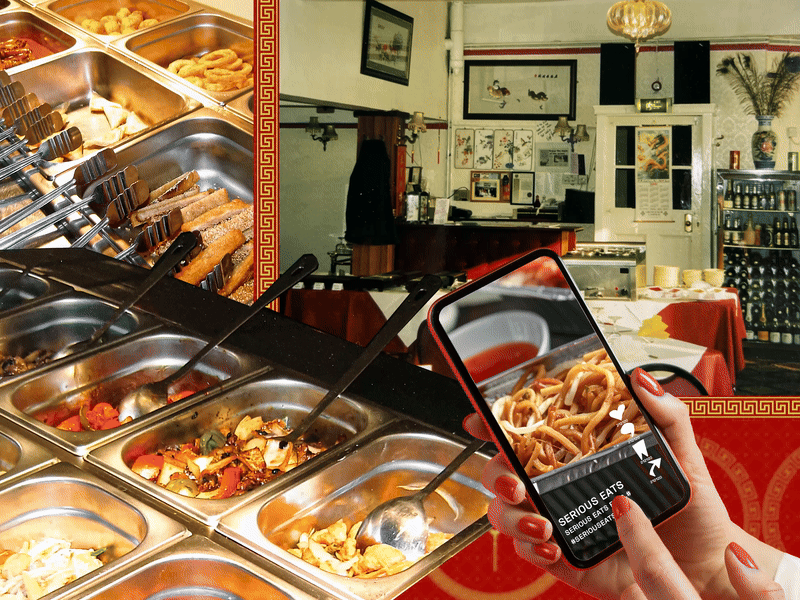
Courtesy of Xiengni Zhou; Getty Images
A heaping plate with various shades of brown. Egg fried rice on one side, chow mein noodles with pale chicken on the other. Pieces of thickly battered, deep-fried chicken. Crispy spring rolls, triangles of toast dotted with sesame seeds. Smooth, viscous golden curry drizzled over everything. The temperature of the food? Unclear.
British Chinese takeaway has been sparking viral debate for the past year, but in the past month, that conversation has expanded into online buzz about American perceptions of British culture and the different takeout foods within the Chinese diaspora. At the root of it, Chinese British takeaway has inspired confusion, shock, and disgust from American TikTok users, who are accusing the cuisine of looking beige. It has also prompted a wider conversation about the takeaways’ inauthenticity and lack of appeal. “Convinced British food is what you eat when you go to hell,” someone comments under a video showcasing a Glasgow eatery’s “salt-and-pepper munchy box” of British chips, onion rings, chicken balls, and curry sauce.
Despite the outrage, British Chinese food is a staple of the British landscape, and has become ingrained in the country’s culinary makeup. But how did it go from humble mom-and-pop restaurants to a subject of persisting social media discourse?
“I found the whole thing quite funny actually,” says Angela Hui, journalist and author of the memoir Takeaway. “It's created a jumping pad for people to learn about Chinese food and culture in the UK.”
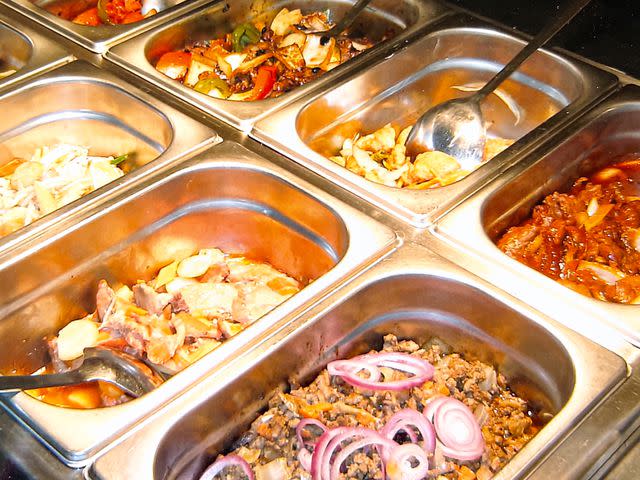
Courtesy of Xiengni Zhou
Chinese immigration in the United Kingdom dates back as far as the 17th century. One of the earliest influxes, though, happened in the late 19th century, when men, primarily from China’s Guangdong province and Hong Kong, arrived in port cities like Liverpool and London as a result of the British shipping company expansion, and is where the first Chinatowns were established. Many took over fish-and-chip shops, where battered fried foods, chips, and slathered sauces were popular among local palates. As Britain continued to expand its colonial reach in Malaysia, Singapore, and Hong Kong, more immigrants arrived in waves, particularly after the Second World War.
John Li, founder of London food stand Dumpling Shack, says his grandfather arrived in London with this postwar immigration wave. After working in a launderette and a restaurant at the London docks, he saved enough money to open his own takeaway. “Chinese eating houses were set up to feed their community,” says Li. “Like many other operators, he learned to develop a menu that catered to a wider audience. It incorporated items like fish and chips, pineapple and gammon, chow mein, and fried rice.” Hui notes it’s also why many eateries serve dishes similar to those sold at fish-and-chip shops, such as chicken balls, curry sauce, sausages, and meat pies.
Ingredient scarcity also played a role, she says, as fresh produce wasn’t as readily available as it is now. According to Hui, many relied on canned goods like bamboo shoots and water chestnuts, as well as hardier vegetables like green peppers and onions. Many takeaway owners also grew bean sprouts from mung beans at home.
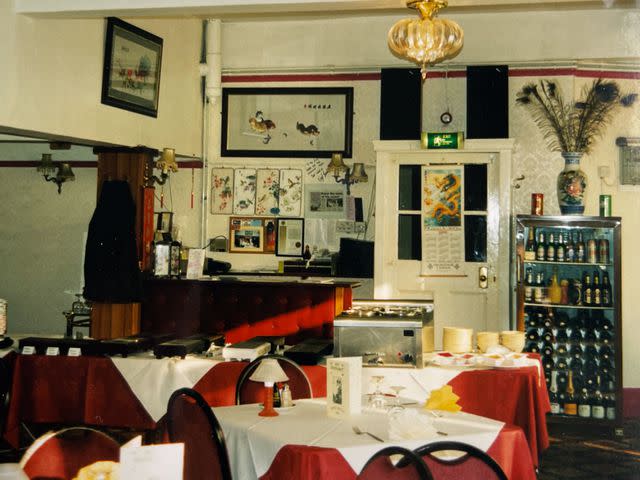
Courtesy of Xiengni Zhou
Content creator Xiengni Zhou, whose mother Jolene Yu runs Sheffield takeaway Wok Inn, posted their salt-and-pepper box recipe on TikTok in January to raise awareness of the history behind the cuisine and the genesis of the dish. Her video was met with both rudeness and curiosity from users on the app. “It was like a whole new world for them,” she says.
Still, while British Chinese food has been around for centuries, it’s become the perfect breeding ground for TikTok discourse as people have increasingly posted about it. The algorithm loves hyperbole, and the shocking visuals of curry sauce-drowned plates are just enough to encourage users to engage with the content for an entire year, inspiring comments upon comments—and people around the world, intrigued by the cuisine, are even trekking to Britain to taste it for themselves.
But as more people share how they feel about British Chinese food, the conversation has become broader, inspiring users to dive into the complicated history of the cuisine and how it has shaped the lives of immigrants in the United Kingdom today. Children of British takeaway owners have chimed in with their perspectives; many owners of these establishments continue to face systemic racism and xenophobia throughout the country. Zhou feels that the ignorance has continued to perpetuate in the current online reaction to British Chinese food even now, with people sharing their judgmental and dismissive ideas of the food. But it’s nothing new.
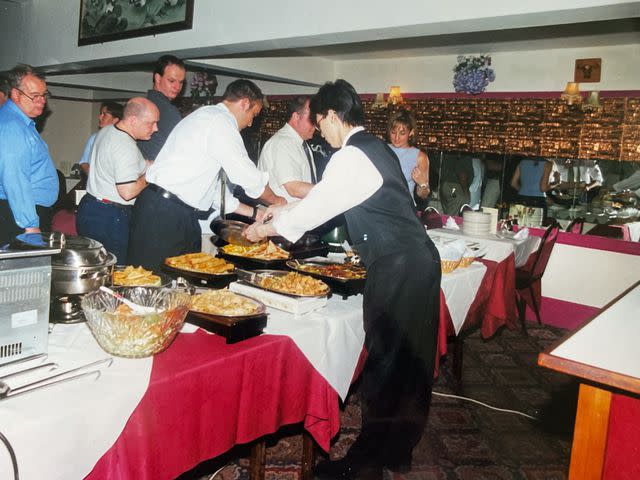
Courtesy of Xiengni Zhou
Hui recalls her earliest childhood memories of her parents’ takeaway being vandalized, facing racist remarks from customers, and being bullied at school if she smelled of fryer oil and sweet-and-sour sauce. She feels many of the TikTok comments are also invalidating to the community of Chinese families making British Chinese cuisine.
“Many were making sweeping statements that undermine a whole diasporic community and the resilience of Chinese families who continue to run these businesses, regardless of whether they think it tastes or looks good,” she says of the TikTok comments.
Much of the backlash online is centered around the “authenticity” of British Chinese cuisine. The food on FYPs seemingly contrasts with individuals’ understanding of what Chinese food is and often stems from other users of Chinese heritage online who call British Chinese food contrived, as seen by many of the videos posted reacting to the food. But both Li and Hui disparage the term.
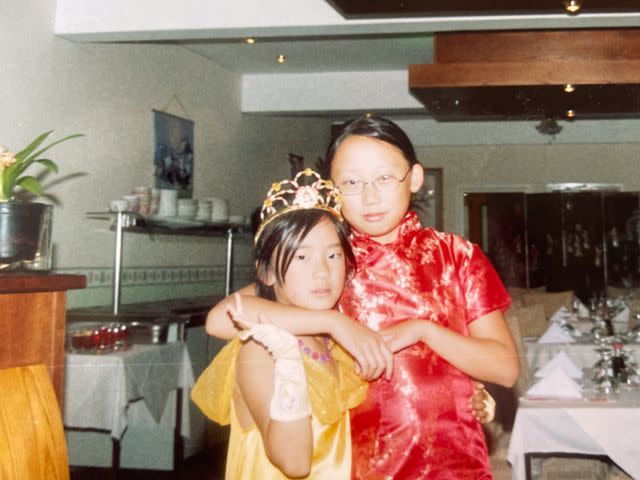
Courtesy of Xiengni Zhou
"Authenticity is like nails on a chalkboard to me,” says Li. “[British Chinese food] illustrates the entrepreneurial and resilient nature of immigrants.” Once alien to the masses, the cuisine is now one of the most popular in the country. Curtis Chin, author of Everything I Learned, I Learned in a Chinese Restaurant, says it’s not the first time the authenticity debate has arisen. Like their British counterparts, Chinese restaurant families in America face similar questions.
It’s difficult to define what “authentic” Chinese food is, though. Throughout history, the cuisine has continuously adapted in response to globalization, imperialism, and the need for survival. Dishes like egg tarts, Hong Kong French toast, and bubble tea—dishes now intricately associated with Chinese cuisine—have roots in Western imperialism, with influences from British and Portuguese trade.
You can see this adaptability, innovation, and perseverance in Chinese takeaways, and it’s not often talked about. “Many have misconceptions that the food is dirty or looked down upon, but Chinese takeaway families used whatever ingredients were available to them at the time and tried new things,” says Hui. “Through that, a new cuisine emerged.”
Yu’s salt-and-pepper box consists of wok-fried chicken and chips with red onion, garlic, Sichuan peppercorns, Chinese five spice, ground cumin, and MSG, among other ingredients (Li says every restaurant has their own take on the famous salt-and-pepper chips, but his family used Sichuan peppercorn, salt, white pepper, five spice, a “touch” of sugar, and MSG). The dish originated in northern England and Scotland within the enclaves of takeaways, but has since disseminated to a few southern spots, too. It’s among one of the best-selling items at Wok Inn. The virality and interest in exploring pan-Asian cuisine has inspired Yu to add more cuisines to the menu, like Singaporean vermicelli noodles and Korean-inspired dishes.
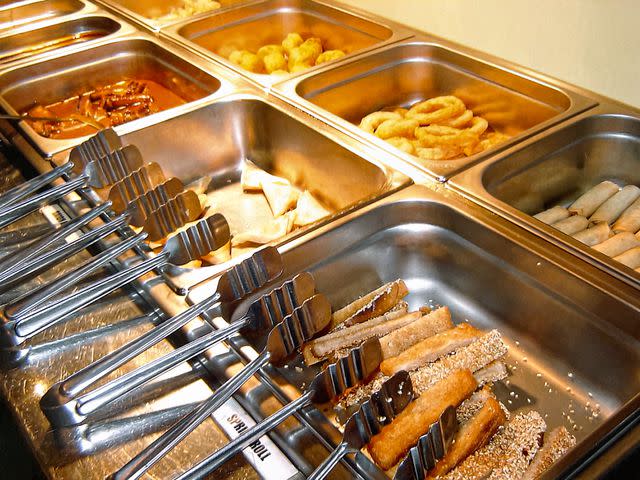
Courtesy of Xiengni Zhou
Li’s ideal plate involves sesame prawn toast (which he calls the “king of starters”) paired with Singapore fried rice, kung po chili chicken (which he describes as a spicy version of sweet-and-sour chicken), and a side of prawn crackers. Hui, on the other hand, likes a bit of everything: the base of the plate split half into chips, half egg fried rice, chicken curry, the batter-encased chicken balls, and spring rolls. For Zhou, it’s egg fried rice and chicken chow mein, salt-and-pepper chips or spare ribs, sweet-and-sour chicken balls, curry sauce, and a side of spring rolls.
“British people love their fried stuff,” says Hui. “Beige with a side of beige. I think that's what is so quintessential about British Chinese takeaway.” It's meant to be crispy deep-fried, and provide a sense of familiarity, nutritional information be damned. And while the shock online continues, the controversy itself is as quintessential to the nature of social media as chips are to the British plate.
Read the original article on Serious Eats.

